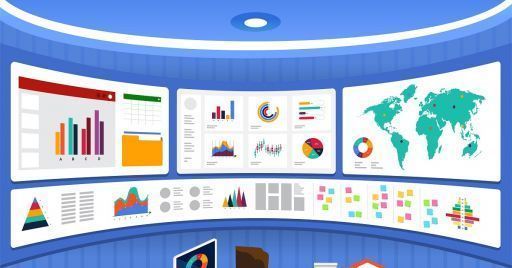
eLearning: how to meet the challenge of learning analytics

How to address the challenges of learning analytics? First and foremost, by avoiding making the most common mistakes. Find out what they are.
Is learning "measurable"? Learning analytics, or learning data analytics, involves precisely the collection and analysis of online learning activity. Yet, the learning process is difficult to evaluate quantitatively. In the era of Big Data, the challenges of learning analytics are getting bigger and bigger even though many strides have been made in this regard.
To avoid entangling this analysis more than necessary, it may be helpful to know what the main mistakes in this field are so that you can recognize and avoid them:
1. Too limited a view: the difficulty of the topic often leads to a rather conservative view of learning analysis. There is a tendency, for example, to limit oneself to only using data from final assessments. In reality, in order to take advantage of the benefits of learning analytics, it is necessary to have a well-structured program that decides what data to take into account and with what objective.
2. Not being proactive: In many cases, the learning impact conversation is tacitly avoided. Neither the company that designed the course nor the client tends to want to delve into the actual outcome of the training in order to circumvent measurement difficulties. You need to be proactive and put the data front and center in order to uncover any problems or strengths of the learning journey.
3. Take data for granted: Often, the ease with which data arrives makes people think that it is easy to find links between results and a possible improvement in the training path. To avoid taking collected metrics for granted, you need to change your perspective to look for causal links between data and course outcomes.
4. Don't include the entire organization: companies and their employees are the target audience for the eLearning training course. A lot of the big data needed to understand and improve a company department's training is in other parts of the organization. Therefore, you need to broaden your reference points and incorporate other parts of the company to gather comprehensive data by analyzing, for example, the performance of all employees.
These and other mistakes need to be corrected right away to take advantage of the benefits of Big Data and learning analytics. Through proper analytics, in fact, you can:
- predict student performance;
- provide a personalized learning experience for learners;
- increase student retention rates;
- enable improvements in subsequent courses;
- improve the quality-price ratio of courses.
Translated with www.DeepL.com/Translator
Did you like this article? Sign up for the newsletter and receive weekly news!
Subscribe to NewsletterComments:
No comments are in yet. You be the first to comment on this article!